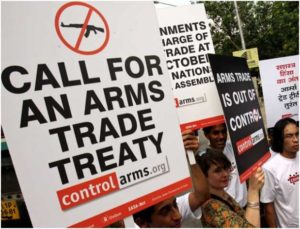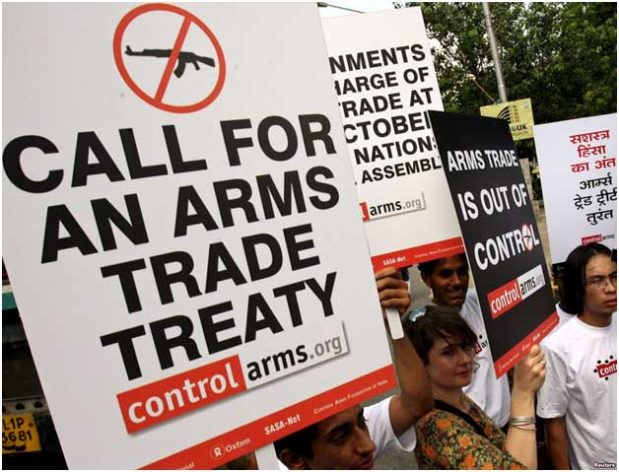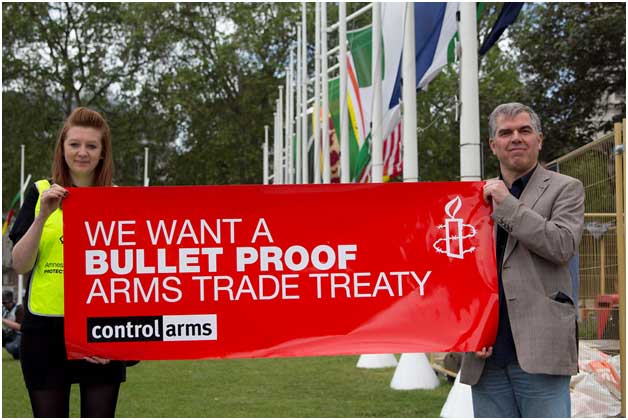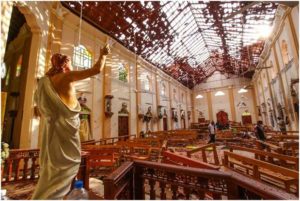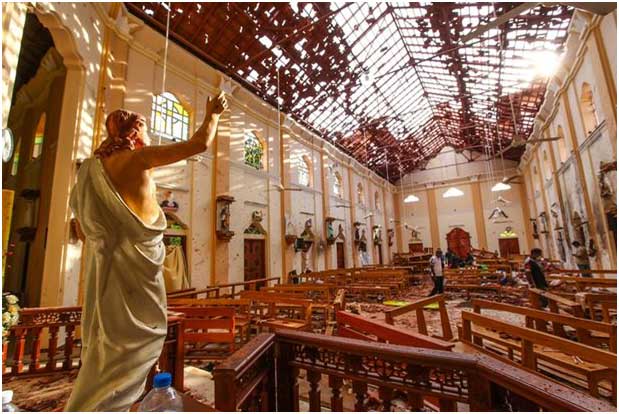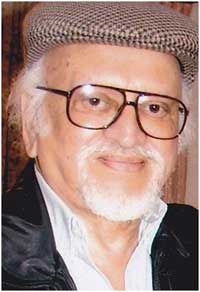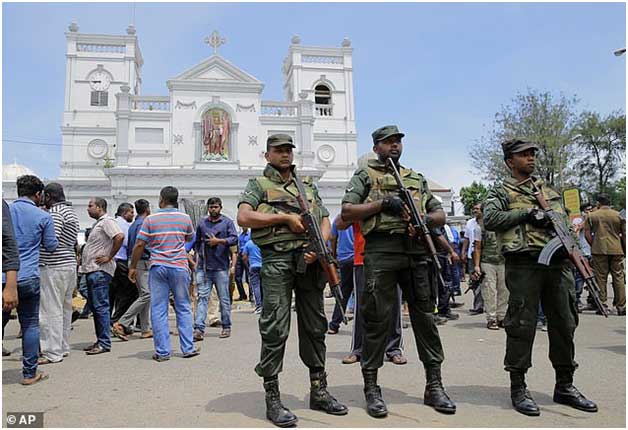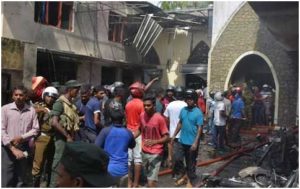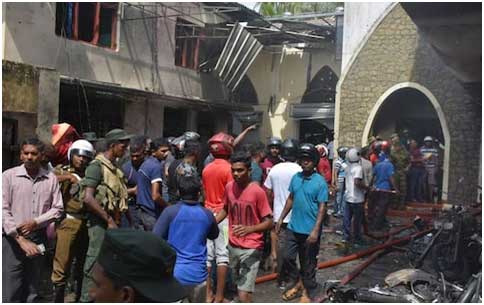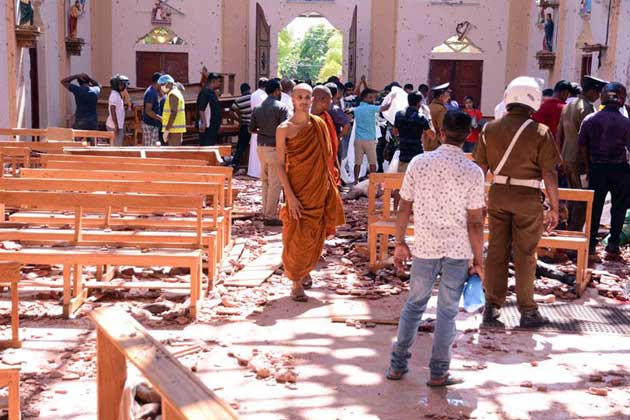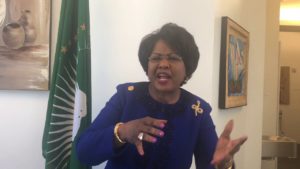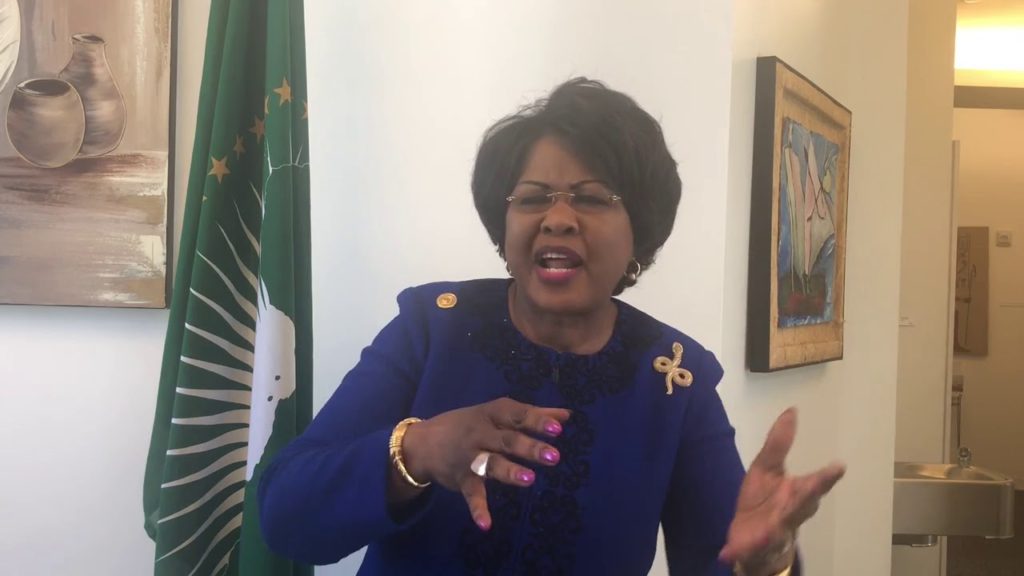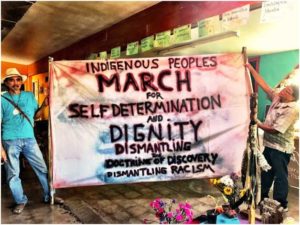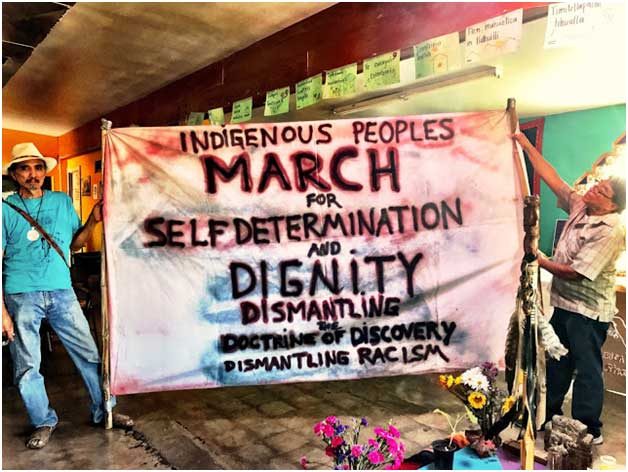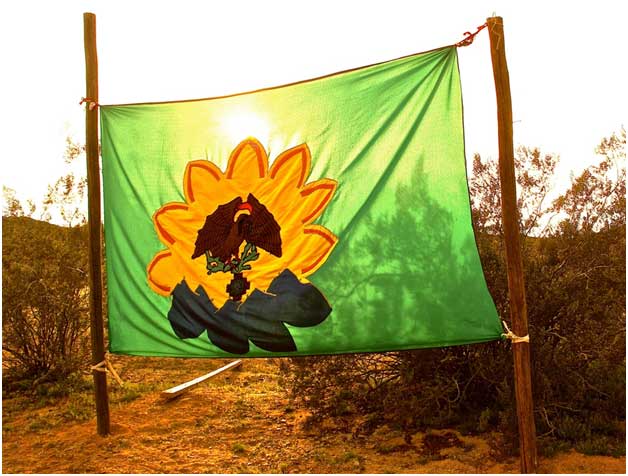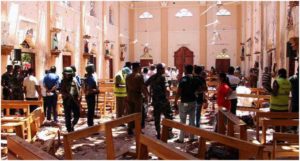
Armed Conflicts, Asia-Pacific, Civil Society, Featured, Global, Global Governance, Headlines, Human Rights, IPS UN: Inside the Glasshouse, Peace, TerraViva United Nations
Tisaranee Gunasekara is a political commentator based in Colombo*
“Unmindful are the walking dead
The known way is an impasse.”
Heraclitus (The Fragments)
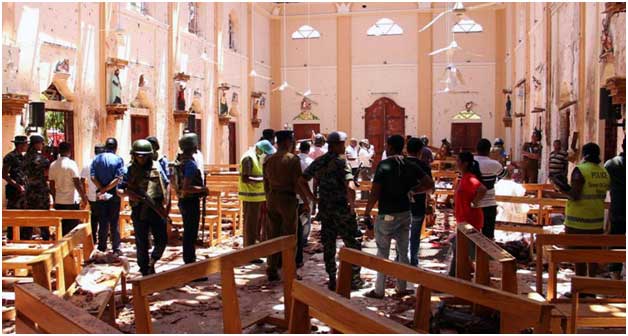
– We have been here before. This blooded precipice is familiar, this looming abyss. What is unfamiliar, what renders the Easter Sunday massacre most vile and truly nightmarish is the total absence of any knowable rationality.
There is no context to this horror, no back-story; it cannot be framed, politically or historically. Other massacres were presaged; this one fell on an unsuspecting people, a killer-bolt on a clear Sunday morning. It is the most heinous and the most incomprehensible act of violence in our violence-ridden history.
Every massacre of innocents leaves behind a heap of questions. The larger why, the philosophical, existential why might be unanswerable, but the smaller whys almost always are.
Whether it was Black July, the Anuradhapura massacre, or any of the civilian bloodletting that came afterwards, there was a discernible path to the outrage paved with a history of real or imagined wrongs.
Not so this massacre of innocents.
That the massacre is the work of an Islamic terror group is now certain, a conclusion made inescapable by the involvement of several suicide bombers. The attacks on the hotels are barbaric, but part of a comprehensible, global pattern. You want to hurt an economy dependent on tourism; you attack places where tourists congregate, from beaches and ancient ruins to hotels.
Not so the targeting of Catholic churches in Sri Lanka. That is where the utter incomprehension stems from. In Sri Lanka, there has been no history of violent animosity between Muslims and Christians/Catholics. Both communities have been targeted by Sinhala-Buddhists on multiple occasions. They were both victims of majoritarian violence, but never responded in kind.
Had the suicide bombers targeted state institutions, places of entertainment, Buddhist temples or even Hindu kovils, it would have made sense in terms of vengeance for a real or imagined wrong.
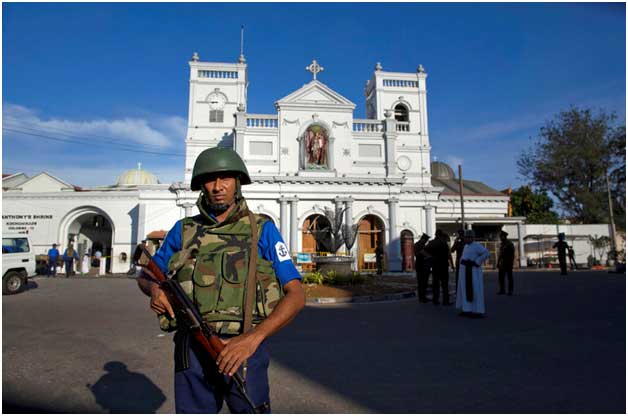
Why churches? Why only Catholic churches?
Churches have been targeted by Islamic terrorists elsewhere in the world, including Asia; the Surabaya bombings in Indonesia and the Jolo church attacks in the Philippines are cases in point. But every one of those attacks could be placed within a national politico-historical context. There is no such context here in Sri Lanka.
Attacks by a lone gunman or a lone bomber might have been comprehensible, the work of a clinically deranged man. But an operation of this complexity and magnitude, involving the willing and knowing cooperation of hundreds of people, is unfathomable.
The killers, the human bombs, are believed to be Lankan Muslim men.
For any terror organisation, suicide killers would be a valuable possession, something you don’t expend in vain. A suicide killer must be trained and groomed right up to the moment of murder, handled with meticulous care, kept on the pre-prepared path, shielded from every human emotion. Why use such valuable and not easily replaceable weapons on targeting a community that had not done you or your local co-religionists any harm?
Were the churches targets of opportunity? In Sri Lanka, churches (along with mosques and kovils) are relatively unprotected and vulnerable. But so are many other institutions and structures, both secular and religious. Was it to gain maximum publicity – bombing churches on Easter Sunday? That would have been a credible explanation had the authors rushed to claim responsibility.
** But so far, no organisation has claimed responsibility, another unusual occurrence. Generally, after a successful operation, the claim to own it is a race. Terrorists love publicity. That is how they gain new recruits and new resources.
So here we are, in a hell both familiar and unfamiliar. How not to plunge from this to a worse hell is the hardest challenge ahead, much harder than identifying, apprehending and punishing the guilty.
An Unforgivable Failure
There is one haunting truth about the Easter Sunday massacre – with a little more vigilance, it might have been prevented. A section of the security establishment seems to have known that an Islamic terror group was planning to target Catholic churches. According to reports, they even knew the names and other details of some of the attackers, possibly ten days ahead.
The speed with which the first arrests were made gives credence to these reports. Such speed by our police can be explained only by prior-knowledge. Greater the speed, greater the prior-knowledge. And the speed was great, unprecedentedly so.
That begs two critical questions.
Who knew? Why did those in the know do nothing with their knowledge?
If the known attackers had been arrested, the massacre wouldn’t have happened. And it could have been done under normal law. The Defence Secretary is lying if he claims that the information was vague and the absence of emergency regulations was a handicap.
If the churches were informed about their peril, they could have taken some precautions. That certainly didn’t require emergency regulations.
With either of those two measures, three hundred innocent lives could have been saved.
We, as a nation, need to know why those lives were wantonly sacrificed. The SLPP had predictably accused the government of not supporting the intelligence agencies, of persecuting and discouraging them. That is incorrect. The intelligence agencies are not the victims of this story. They received the information, and opted not to do anything with it. That was a severe dereliction of duty.
President Maithripala Sirisena must shoulder much of the blame. As the Minister of Defence, protecting the people was his responsibility. He failed abysmally. And he has not apologised for that failure. That doesn’t mean the UNP can exculpate itself from all responsibility, all blame.
The ‘we were not told’ excuse cannot hold water since one of the letters warning about impending terror attacks seems to have been circulating in the social media for days. If Minister Harin Fernando’s father knew about the danger, then the Minister, his cabinet and non-cabinet colleagues and his prime minister cannot plead ignorance.
The government’s failure to stop the massacre fits into a general pattern of indifference towards all forms of extremism. One week before the Easter Sunday massacre, on Palm Sunday, a Methodist church in Anuradhapura was attacked, reportedly by a Sinhala-Buddhist mob. The police refused either to apprehend the attackers or to protect the victims. The government didn’t condemn the attack, didn’t order the police to catch the culprits. All it did was to promise the church protection for Easter.
The promise reportedly came from the Prime Minister. There was not a hum from the President. Political leaders on all sides of the divide, including the minister in charge of Christian Affairs, acted blind, deaf, and mute.
Perhaps this blasé attitude of the political class percolated to the intelligence establishment. Perhaps those in the know thought that there was no need to act if the intended target was a church, or some other minority religious establishment. After all, thirteen months have passed since the anti-Muslim riots of Digana. Time enough for the main suspects to be tried in a court of law. Yet no one has been formally charged and every suspect is out on bail.
Had the government honoured its promise to end impunity and ensure justice, had it honoured the promise to combat extremism and promote moderation, the Easter Sunday massacre might have been avoided. This government did not promote extremism, like its predecessor. But it didn’t resist extremism either. It turned itself into a bystander. Three hundred innocent people paid for that cowardice, that indifference, with their lives.
The next vicious spiral
A new fault line has been created in Sri Lanka’s already seriously compromised societal fabric. A new enmity has been birthed. This is not the moment for anodyne slogans about unity and peace. The peril cannot be resisted, if its existence is unacknowledged.
Sri Lanka’s blood-soaked history provides us with ample warning of the dangers ahead.
Will the targeting of Catholics by Islamic terrorists create an endless blood feud between Lankan Catholics and Lankan Muslims? Will the wronged Catholics themselves do wrong by targeting innocent Muslims?
The fear that the Easter Sunday massacre will lead to a round of attacks on Muslim properties and religious establishments has so far not materialised. For this, the government, especially the UNP, deserves the credit. When the first attack on a mosque was reported, immediate action was taken, including the imposition of a curfew. That probably saved the country from another round of bloodletting. But the danger will not be over in a day, or even a year. Only constant vigilance can prevent another tragedy.
Terrorists of all kinds have two targets – one the purported enemy; the other, one’s own community. The authors of the Easter Sunday’s massacre of innocents would have known that they were placing their own innocent coreligionists in peril. They would have known that retaliatory attacks could happen, if not in the immediate aftermath, then someday.
And they wouldn’t have cared. That is a function of extremism. They not only hate their enemies. They don’t care about their own community. The cancer of extremism that is affecting Lankan religions must be combated, perhaps primarily from within.
The first step is to start criticising one’s own extremists. It is only by taking an unequivocal stand against extremists of our own community do we earn the moral right to criticise extremists of other communities.
Sinhalese and Tamils failed to take a stand against their own extremists; each community raged against the other’s tribalism while justifying one’s own. That failure caused both communities incalculable harm, and incalculable self-harm. Black July turned a marginal insurgency into a full scale war. The LTTE’s countless atrocities eventually contributed to its own shameful defeat.
When Sinhala-Buddhists attacked Muslims in Digana in the name of Buddhism, the absolute majority of Buddhist leaders remained mute. The Muslim leaders will hopefully set a different example, not just in the immediate aftermath, but continuously. The task would be long and hard.
Though Lankan Muslims have been the victims of both Sinhala-Buddhist and LTTE violence, the atrocities committed by Muslims elsewhere in the world have rebounded on them unjustly, enveloping them in a miasma of fear and suspicion. Easter Sunday’s massacre will worsen their plight.
There is a danger of Muslims being considered as enemies by all other communities. Extremists within the Sinhala-Buddhist fold will work towards such an outcome. One can almost hear the likes of Galagoda-Atte Gnanasara crowing. Forgotten will be the role played by anti-Muslim violence in fostering Muslim extremism.
But that too would be in accordance with the intent of the attackers. As Moroccan editor Ahmed Benchemsi opined, “…..spreading hate is the terrorists’ job. Hating you is not enough; they also need you to hate them, so the struggle goes unchallenged” (Newsweek – 20.11.2008).
Terrorists revel in hate, and they want that hate to be extended to their racial/religious community as well. They want their crime to become the crime of their entire community, falling even unto unborn children. When such hatred seeps into a national bloodstream, the terrorists achieve their final victory. That happened between Sinhalese and Tamils. It mustn’t happen between Lankan Catholics and Lankan Muslims.
Sadly, hate is easy to cultivate. It can flourish anywhere. All it needs is an inch, a second, a thought, a glance, one unguarded moment. And a destructive atom can always survive, waiting with endless patience until the next time.
So, we stand on a familiar precipice, staring at a familiar abyss. This time, the task of guiding us away from it, towards the plains of moderation and stability belongs to Muslims and Catholics. This is their moment to be what Sinhalese and Tamils were not at comparable moments in their histories.
This is their moment to place their humanity above every other consideration, in a way we, Sinhalese and Tamils, failed to. And it is for us, especially Sinhala-Buddhists, to prevent our own extremists from intervening to sow hate, to prevent healing, to peddle vengeance in the guise of justice.
As Aristotle said, “For the things we have to learn before we do them, we learn by doing them… We become just by just acts, temperate by doing temperate acts…” (Necomachean Ethics). In this moment, grand gestures are necessary; but every little act of ordinary decency and kindness counts. If our leaders, elected and self-appointed, fail to stand against extremism, fail to build an alliance of moderates, perhaps we, the people, who are outraged by Easter Sunday’s massacre of innocents can.
*This analysis was written on April 23, two days following the Easter Sunday terrorist attacks in Sri Lanka.
** Since then, there have been reports that ISIS has claimed responsibility for inspiring the attacks.

